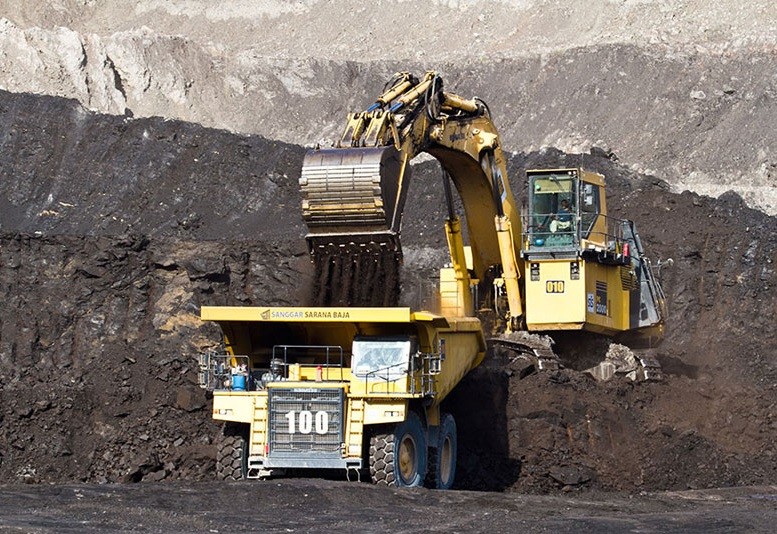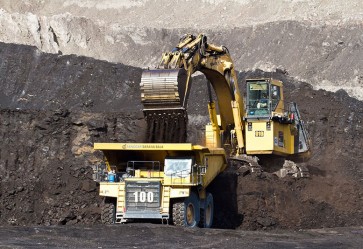Coal: Between growth and energy mix
As many as 27 drownings were recorded from 2011 to 2016 in the pools that used to serve as mining pits and this eventually drove President Joko “Jokowi” Widodo to form a special task force to deal with the issue.
Change Size
 A backhoe loads tons of coal to a heavy-duty truck at Adaro Energy's site in Kalimantan. (Courtesy of http://www.adaro.com//-)
A backhoe loads tons of coal to a heavy-duty truck at Adaro Energy's site in Kalimantan. (Courtesy of http://www.adaro.com//-)
R
esistance against coal as source of energy is growing steadily. A local NGO called the Network for Mining Advocacy (Jatam) recently released a report entitled “Hungry Coal, Coal Mining and its Impact on National Food Security.”
The report said existing coal concessions had overlapped 19 percent of the area mapped and dedicated for rice fields and could cause a loss of 1.7 million tons in rice production. This number is quite significant and almost equals the amount of the annual rice imports (about 2 million tons in 2015).
Not long after that, Tempo, a local weekly magazine, also chose coal mining for an investigative report entitled, “Who Owns the Deadly Pools?” It referred to the 632 exhausted coal mining pits left untreated that have become huge water pools and pose safety threats to the villagers living nearby.
As many as 27 drownings were recorded from 2011 to 2016 in the pools that used to serve as mining pits and this eventually drove President Joko “Jokowi” Widodo to form a special task force to deal with the issue. The report indicated a number of big names ranging from government officials to well-known businessmen were behind the irresponsible mining companies.
The in-situ impacts and the ex-situ impacts, off-gas and coal ash waste produced in a coalfired power plant (CFPP) makes it receive strong opposition from the locals, although current boiler technology, such as high efficiency ultra-super critical, guarantees toxic emissions below tolerable limits.
Land owners also often refuse to sell their land to power plant projects, although Law No. 2/2014 on land procurement for public interest requires them to do so. Waves of resistance to every CFPP to be built makes it difficult for power generation companies to find lenders.
With all the negativity surrounding coal, the question now is, “Can we take coal off the list of the energy mix?” To answer that, one must understand the concept of electricity provision based on Law No. 30/2009 underlining the importance of (i) quantity, (ii) quality and (iii) affordable prices for electricity. Regarding the last point, coal is still arguably the cheapest energy source.
















